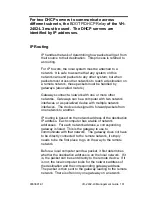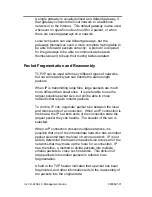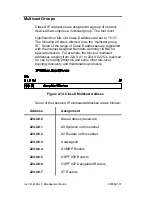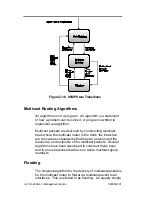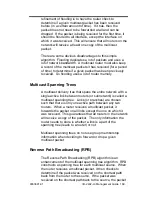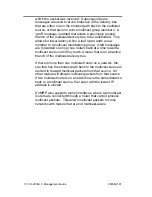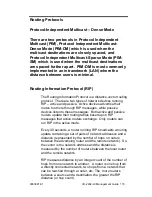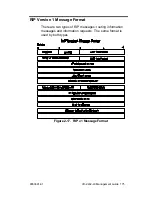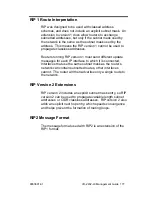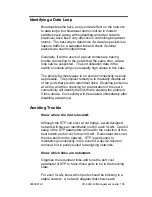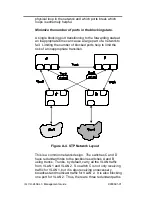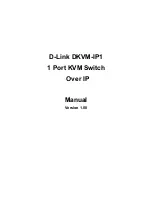
9033691-01
VH-2402-L3 Management Guide 171
send a prune message to the previous router. This will
remove the leaf router’s branch from the spanning tree, and
no more multicast packets (from that source) will be
forwarded to it. Prune messages have a TTL equal to one,
so they can be sent only one hop (one router) back toward
the source. If the previous router receives prune messages
from all of its branch and leaf routers, the previous router will
then send it’s own prune message back one router toward
the multicast source, and the process will repeat. In this
way, multicast group membership information can be used to
prune the spanning tree between a given multicast source
and the corresponding multicast group.
Since the membership of any given multicast group can
change and the network topology can also change, RPM
periodically removes all of the prune information it has
gathered from it’s memory, and the entire process repeats.
This gives all subsequent routers on the network a chance to
receive multicast packets from all multicast sources on the
network. It also gives all user’s a chance to join a given
multicast group.
Multicast Routing Protocols
This section contains an overview of two multicast routing
protocols – Distance Vector Multicast Routing Protocol
(DVMRP), and Protocol Independent Multicast-Dense Mode
(PIM-DM). The most commonly used routing protocol (not a
multicast routing protocol), the Routing Information Protocol,
is discussed in a later section.
Distance Vector Multicast Routing Protocol (DVMRP)
The Distance Vector Multicast Routing Protocol (DVMRP)
was derived from the Routing Information Protocol (RIP) with
the introduction of multicast delivery trees constructed from
information about the ‘distance’ from the local router back
toward the multicast source. DVMRP uses an RPM
algorithm to construct its multicast delivery trees.
The first multicast packet received by a multicast router
using DVMRP is flooded to all interfaces except the one on





